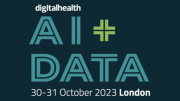Federal support for healthcare, assigned by the CARES Act to cushion the revenue shortfall caused by Covid-19, came to an abrupt end in December 2021. Since then, elective care has still not returned to pre-pandemic levels, and at the same time inflation – coupled with an unprecedented skills shortage – is driving up staffing and other related costs. During 2022, health systems did manage to stabilize, but very tough times are still to come.
Due to concerns during the pandemic, we know that around 4 in 10 adults delayed or avoided medical care. Although we started to feel the impact of this in 2022, it will be in 2023 that the full force of the ‘Covid hangover’ will be felt. Health systems will not only be contending with an excess of patients seeking care, but also more acutely ill patients, who missed opportunities for earlier intervention and will therefore be presenting with more advanced or complicated disease. This will put additional stress on organizations already buckling under the strain of high workloads, overstretched staff and tight budgets.
Healthcare is at a critical juncture, and it’s hard to see a way out of these financial and staffing difficulties without greater use of technology to ease the burden on both frontline and back-office support staff.
In this challenging financial environment, ensuring they are fully reimbursed for the care delivered has never been more important for providers. But according to Change Healthcare, an estimated $262 billion’s worth of claims is initially denied annually – meaning on average, $4.9 million per hospital, or just over 3% of net patient healthcare revenue is at risk each year due to denials. This analysis was carried out in 2017, so it is likely that this figure will be even higher in the post-pandemic world. Unplanned admissions – which, compared to elective care, are far more likely to result in denials – continue to rise, and this is compounded by insurers scrutinizing claims more closely than ever before. The end result is that the claims process is getting more complex, more expensive and takes more time to resolve. Not only does this necessitate more skilled resources to manage the increased volume of denials, it also increases AR risk.
While the obvious answer may seem to be to ‘hire more staff’, this is out of the question for most hospitals which are already contending with increasingly scarce skills in the market as well as ever-present financial pressures. Successfully managing a denied claim is a complex activity requiring deep clinical knowledge as well as experience in the denials process.
Revenue reimbursement is reliant on health systems providing the clinical evidence needed to support prospective pre-authorization, clinical documentation improvement, and retrospective appeals management workflows.
The free text or ‘clinical narrative’, which makes up 80% of the electronic medical record, is where the essential detail for successful appeal of a denied claim lies. However, for healthcare revenue cycle staff, the only current option is to manually review this content, which sometimes runs to hundreds of pages for a single denial, making it largely inaccessible.
This is where AI technology comes in
By using Clinical Natural Language Processing (CNLP) technology, a highly specialized branch of AI that enables machines to understand human language, the solution automates the processing of narrative content of the medical record. It can rapidly identify the evidence of medical necessity needed to appeal a denial if that evidence was documented during the care the patient received. The task can be completed in seconds by the software – a process that can take more than an hour to complete when carried out manually, even by a skilled member of the denials management team in a health system.
According to a CDI industry study, around 60% of healthcare institution respondents are already turning to some form of NLP solution to help improve the claims process. Take Northwell Health as an example – earlier this year the largest healthcare provider in New York State opted to introduce CNLP to improve revenue cycle management operations.
By automating this manually intensive process, the technology relieves revenue cycle staff of the time-consuming task of painstakingly reading through medical records to find clinical evidence, enabling organizations to improve their clinical documentation, reduce the number of denials they receive and improve their rate of successful appeal, all without increasing revenue cycle team headcount.
Although AI is used in real-world applications that we use daily, it’s widely acknowledged that healthcare has been far slower than other sectors to embrace this technology. This needs to change in 2023, as the denials claims process continues to increase in complexity, resulting in a far more labor-intensive task for stretched health systems. Coupled with overwhelming pressures exerted by the Covid hangover, skills shortages and global inflation, there’s never been a greater need for adopting the technology that makes this possible.
About the author
Chris Tackaberry, is co-founder and CEO of Clinithink, a software company tackling some of the biggest challenges facing health systems.





